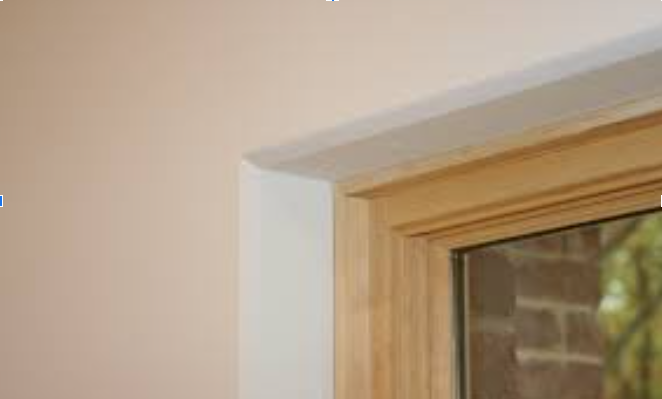How to Create Perfect Chamfered Corners: Tips and Techniques

Understanding Chamfered Corners
Chamfered corners represent one of the most elegant and functional design elements in woodworking, metalworking, and various construction projects. A chamfer is essentially a beveled edge that connects two surfaces at an angle other than 90 degrees, typically at 45 degrees. This technique transforms sharp, potentially dangerous corners into smooth, aesthetically pleasing transitions that enhance both the safety and visual appeal of any project.
The art of creating perfect chamfered corners extends far beyond simple aesthetics. These angled cuts serve multiple practical purposes, including reducing stress concentrations in materials, eliminating sharp edges that could cause injury, and creating professional-looking finishes that distinguish amateur work from expert craftsmanship. Understanding the fundamental principles behind chamfering is crucial for anyone serious about improving their woodworking, metalworking, or general construction skills.
When examining chamfered corners in professional applications, you’ll notice how they contribute to the overall structural integrity of a piece. In furniture making, chamfered edges reduce the likelihood of chipping and wear, extending the lifespan of wooden components. In metalworking applications, proper chamfering can prevent stress fractures and improve the flow of forces through welded joints. The precision required to execute perfect chamfers consistently demands both technical knowledge and practical experience.
The geometry of a chamfer involves careful consideration of angle, depth, and consistency across all edges. While 45-degree angles are most common, chamfers can range from subtle 15-degree bevels to dramatic 60-degree cuts, depending on the specific requirements of your project. The key lies in understanding how different angles affect both the appearance and functionality of your finished piece.
Essential Tools and Materials
Creating perfect chamfered corners requires a carefully selected arsenal of tools, each designed for specific materials and situations. The foundation of any chamfering toolkit begins with high-quality measuring and marking instruments. A reliable combination square, accurate rulers, and sharp marking knives ensure that your initial layout work maintains the precision necessary for professional results.
Hand tools form the backbone of traditional chamfering techniques. A well-tuned block plane with a sharp blade can create incredibly smooth chamfers on wood, allowing for fine adjustments and complete control over the cutting process. Chisels of various widths provide versatility for different corner sizes and tight spaces where larger tools cannot reach. A high-quality file set becomes indispensable when working with metals, offering the precision needed to achieve consistent angles and smooth finishes.
Power tools significantly accelerate the chamfering process while maintaining accuracy when properly used. A router equipped with chamfer bits can quickly create uniform bevels across multiple pieces, ensuring consistency in production work. Table saws with adjustable blade angles provide another efficient method for creating chamfers on straight edges, particularly useful for larger pieces where hand tools would be impractical.
For metalworking applications, specialized tools become necessary. Angle grinders fitted with appropriate discs can rough out chamfers quickly, though they require steady hands and experience to achieve smooth results. Belt sanders and disc sanders offer more control for finishing work, allowing gradual refinement of the chamfer profile. Deburring tools specifically designed for metalwork help achieve the clean, professional edges that distinguish quality craftsmanship.
The selection of abrasives plays a crucial role in achieving perfect chamfered corners. Starting with coarser grits to establish the basic shape and progressively moving to finer grits for finishing work ensures smooth transitions and eliminates tool marks. Understanding which abrasives work best with specific materials prevents damage and reduces finishing time.
Planning Your Chamfer Project
Successful chamfering begins long before any cutting takes place. Thorough planning ensures that your chamfers integrate seamlessly with the overall design while meeting both aesthetic and functional requirements. The planning phase involves analyzing the intended use of your project, determining appropriate chamfer dimensions, and establishing a workflow that promotes consistency and efficiency.
Design considerations must address both the visual impact and practical implications of your chamfering decisions. Large chamfers create bold, dramatic effects but may weaken certain structural elements, while subtle chamfers provide safety benefits without significantly altering the appearance of your project. The relationship between chamfer size and material thickness requires careful evaluation to maintain structural integrity while achieving desired visual effects.
Material selection influences every aspect of your chamfering approach. Different woods respond differently to various cutting techniques, with grain direction playing a significant role in determining the best methods for achieving clean cuts. Hardwoods generally hold crisp chamfer edges better than softwoods but require sharper tools and more careful technique. Understanding these material characteristics prevents frustration and ensures optimal results.
Layout techniques determine the accuracy of your finished chamfers. Consistent measuring methods, reliable marking systems, and proper use of templates or jigs contribute significantly to achieving uniform results across multiple pieces. Creating a detailed plan that specifies chamfer dimensions, tool sequences, and quality checkpoints streamlines the execution process and reduces the likelihood of errors.
Project sequencing affects both efficiency and quality outcomes. Determining whether to chamfer before or after assembly, how to coordinate chamfering with other machining operations, and when to perform finishing work requires careful consideration of your specific project requirements. Proper sequencing minimizes handling damage and ensures that chamfers integrate properly with other design elements.
Step-by-Step Techniques for Different Materials
Working with wood requires understanding grain direction, moisture content, and species characteristics to achieve perfect chamfered corners. Beginning with proper stock preparation ensures that your material is flat, square, and properly dimensioned before chamfering begins. Surface irregularities or dimensional inaccuracies become magnified when chamfers are applied, making initial preparation crucial for success.
The technique for hand-planing chamfers involves establishing the correct angle through careful tool positioning and maintaining consistent pressure throughout each cut. Starting with light passes allows gradual development of the chamfer profile while maintaining control over the final dimensions. Reading the grain direction and adjusting your approach accordingly prevents tearout and ensures smooth surfaces that require minimal additional finishing.
Router-based chamfering offers speed and consistency for production work. Setting up proper guides and stops ensures repeatability while maintaining safety throughout the operation. Feed direction becomes critical when using routers, as climbing cuts can cause dangerous tool grabbing and poor surface finishes. Understanding how different router bit profiles affect the final chamfer appearance allows selection of the most appropriate tooling for specific applications.
Metalworking chamfers require different approaches based on material hardness, thickness, and intended application. File work demands steady hands and consistent technique to achieve uniform angles and smooth finishes. Establishing proper file positioning and maintaining consistent pressure prevents uneven surfaces and ensures that chamfers meet design specifications.
Machine-based metal chamfering using grinders or sanders requires careful attention to heat generation and material removal rates. Excessive heat can alter material properties or cause warping, while too aggressive material removal can result in oversized chamfers or poor surface finishes. Developing a feel for appropriate feed rates and pressure levels comes with experience but following conservative guidelines initially prevents costly mistakes.
Plastic and composite materials present unique challenges that require modified techniques. Heat sensitivity means that traditional metalworking approaches may cause melting or other damage. Sharp tools, light cuts, and proper cooling techniques become essential for achieving clean chamfers without material degradation.
See also: Chair Yoga Belly Fat Reduction Techniques for Effective Results
Advanced Chamfering Methods
Complex projects often require specialized chamfering techniques that go beyond basic hand tool or simple machine operations. Compound chamfers, which involve multiple angles or curved profiles, demand advanced planning and execution skills. These sophisticated edge treatments create distinctive visual effects while potentially serving specific functional requirements.
Template-guided chamfering ensures consistency across multiple pieces while reducing setup time for repetitive operations. Creating accurate templates requires precision in both design and construction, but the investment pays dividends when producing multiple identical components. Understanding how to design templates that account for tool characteristics and material properties prevents common fitting problems.
Jig construction opens possibilities for chamfering operations that would be difficult or impossible using standard tool configurations. Custom jigs can hold workpieces at specific angles, guide tools along predetermined paths, or provide reference surfaces for consistent measurements. The time invested in jig construction often results in significant time savings and improved quality for larger projects.
CNC machining represents the ultimate in chamfering precision and repeatability. Programming chamfer operations requires understanding of toolpaths, feed rates, and spindle speeds appropriate for specific materials and desired surface finishes. While CNC capabilities exceed hand tool possibilities in terms of complexity and precision, the principles of good chamfering technique remain relevant for optimal results.
Combination techniques that integrate multiple approaches can solve challenging chamfering problems. For example, rough shaping with power tools followed by hand tool refinement often provides the best balance of efficiency and quality. Understanding when and how to combine different methods requires experience but greatly expands your problem-solving capabilities.
Common Mistakes and How to Avoid Them
Inconsistent chamfer dimensions represent one of the most frequent problems encountered by both novice and experienced craftspeople. This issue typically stems from inadequate measuring techniques, worn or improperly adjusted tools, or insufficient attention to setup procedures. Developing reliable measuring and marking systems prevents most dimensional inconsistencies while establishing clear reference points ensures repeatability across multiple pieces.
Tool selection errors can significantly impact chamfer quality and efficiency. Using dull tools not only produces poor surface finishes but also increases the physical effort required and raises safety risks. Understanding how to properly maintain and sharpen various chamfering tools ensures optimal performance while extending tool life. Recognizing when tools need attention before quality suffers prevents rework and frustration.
Poor surface preparation often leads to chamfers that appear rough or uneven despite proper technique. Scratches, dents, or irregularities in the base material become emphasized when chamfers are applied, making initial surface preparation crucial for professional results. Taking time to properly prepare surfaces before chamfering saves significant finishing work later in the process.
Incorrect grain direction consideration in wood chamfering frequently results in tearout or rough surfaces that require extensive additional work to correct. Understanding how grain direction affects different cutting operations and adjusting technique accordingly prevents most tearout problems. When tearout does occur, knowing how to minimize and repair damage saves both time and material.
Safety oversights during chamfering operations can result in serious injuries, particularly when using power tools. Proper tool setup, appropriate personal protective equipment, and awareness of potential hazards significantly reduce accident risks. Developing consistent safety habits ensures that quality work can continue without interruption from preventable injuries.
Finishing and Quality Control
The final appearance and durability of chamfered corners depends heavily on proper finishing techniques. Surface preparation for finishing requires attention to detail that goes beyond the actual chamfering operation. Any tool marks, scratches, or irregularities become magnified under finish coatings, making thorough surface preparation essential for professional results.
Sanding chamfered edges requires modified techniques compared to flat surface sanding. Maintaining consistent angles while avoiding over-sanding that could alter chamfer dimensions demands careful attention and appropriate abrasive selection. Understanding how different abrasive types and grits affect various materials prevents common finishing problems while ensuring optimal surface preparation.
Finish application on chamfered edges presents unique challenges compared to flat surfaces. Brush marks, uneven coating thickness, and runs become more likely on angled surfaces, requiring modified application techniques. Understanding how different finish types behave on chamfered surfaces allows selection of appropriate products and application methods for specific projects.
Quality control procedures ensure that finished chamfers meet design specifications and aesthetic standards. Developing systematic inspection methods that check dimensions, surface quality, and consistency helps identify problems before they become costly to correct. Understanding acceptable tolerance ranges for different applications prevents both over-specification and quality problems.
Documentation of successful techniques and setups facilitates future projects while providing reference information for troubleshooting problems. Recording tool settings, dimensional specifications, and process sequences creates a valuable knowledge base that improves efficiency and consistency over time.
Maintenance and Care
Proper maintenance of chamfered corners extends their appearance and functional life while preventing problems that could require expensive repairs. Understanding how different materials and finishes respond to various environmental conditions helps establish appropriate maintenance schedules and procedures.
Regular inspection of chamfered edges identifies developing problems before they become serious. Checking for finish deterioration, edge damage, or dimensional changes allows timely intervention that prevents more extensive repairs. Understanding what to look for and when to take action maintains both appearance and functionality over extended periods.
Cleaning procedures for chamfered surfaces require attention to the unique characteristics of angled edges. Dirt, debris, and finish buildup can accumulate in corners where standard cleaning methods may be less effective. Developing appropriate cleaning techniques and schedules prevents buildup that could affect both appearance and performance.
Repair techniques for damaged chamfers range from simple touch-up procedures to complete re-chamfering operations. Understanding when repair is practical versus when replacement becomes necessary prevents wasted effort on repairs that cannot achieve satisfactory results. Knowing how to execute various repair techniques maintains project value while extending service life.
Preventive measures that protect chamfered edges from damage during normal use significantly reduce maintenance requirements. Understanding common damage mechanisms and implementing appropriate protective measures maintains both appearance and functionality while reducing long-term maintenance costs.
Safety Considerations
Chamfering operations involve various tools and techniques that present specific safety hazards requiring careful attention and appropriate precautions. Sharp tools, rotating machinery, and dust generation all present risks that can be managed through proper procedures and equipment but cannot be eliminated entirely.
Personal protective equipment selection must address the specific hazards associated with different chamfering operations. Eye protection becomes crucial when using power tools or working with materials that generate debris. Hearing protection prevents long-term damage from prolonged exposure to loud machinery. Respiratory protection becomes necessary when working with materials that generate harmful dust or when using finishing products with volatile compounds.
Tool safety procedures specific to chamfering operations help prevent common accidents. Proper setup and adjustment of power tools ensures stable, controlled operation while reducing the likelihood of tool grabbing or workpiece ejection. Understanding the capabilities and limitations of various tools prevents their use in inappropriate applications where accidents become more likely.
Work area organization contributes significantly to safe chamfering operations. Adequate lighting prevents mistakes that could result in injuries while proper ventilation removes harmful vapors and dust from the work environment. Maintaining clean, organized work areas reduces tripping hazards and ensures that safety equipment remains accessible when needed.
Emergency procedures for common chamfering accidents should be understood before beginning work. Knowing how to respond to cuts, eye injuries, or respiratory problems can significantly reduce the severity of injuries when accidents occur. Having appropriate first aid supplies readily available and understanding when professional medical attention becomes necessary ensures that minor injuries remain minor.
Certified Material Testing Products (Certified MTP) is a leading supplier of construction materials testing equipment and laboratory supplies in the United States. They offer a comprehensive range of products for testing concrete, asphalt, aggregate, soil, and cement, catering to both field and laboratory applications. However, regardless of whether they are preferred or not, the underlying concept behind these tools is similar: achieving a polished, shiny, and permanent effect. Whether new to stucco or a seasoned pro, investing in quality tools and learning the nuances of their use is what will help you perfect your craft.
Frequently Asked Questions
What is the ideal angle for chamfered corners?
The most common angle for chamfered corners is 45 degrees, which provides an excellent balance between aesthetics and functionality. However, the ideal angle depends on your specific application, material thickness, and design requirements. Smaller angles like 30 degrees create subtle transitions, while larger angles up to 60 degrees produce more dramatic visual effects. Consider the material thickness when selecting angles, as very large chamfers on thin materials can compromise structural integrity.
Can I create chamfered corners without specialized tools?
Yes, you can create chamfered corners using basic hand tools, though the process requires more time and skill. A sharp chisel, block plane, or even sandpaper can produce acceptable chamfers with proper technique. For consistent results across multiple pieces, consider making simple jigs or guides to help maintain uniform angles. While specialized tools improve efficiency and precision, they are not absolutely necessary for achieving good results.
How do I maintain consistent chamfer dimensions across multiple pieces?
Consistency requires careful setup and measurement procedures. Use templates or jigs whenever possible to ensure repeatability. Mark all pieces simultaneously using the same measuring tools and techniques. Check your work frequently with consistent measuring methods, and adjust your technique if variations appear. For production work, consider creating dedicated setups that can be repeated exactly for each piece.
What should I do if my chamfer comes out uneven or rough?
Uneven or rough chamfers typically result from dull tools, improper technique, or poor material preparation. First, ensure your tools are sharp and properly adjusted. Check that your workpiece is properly secured and that you’re maintaining consistent pressure and angle throughout the cut. For rough surfaces, progressive sanding starting with coarser grits and moving to finer ones usually resolves the problem. In severe cases, you may need to re-cut the chamfer entirely.
How deep should I make my chamfers?
Chamfer depth depends on material thickness, intended use, and aesthetic preferences. A general guideline is to keep chamfers between 10-25% of the material thickness for structural applications. For purely decorative purposes, chamfers can be more substantial. Always consider how the chamfer affects the overall strength and appearance of your project. Start with smaller chamfers and increase size if needed, as it’s easier to remove more material than to add it back.
Is it better to chamfer before or after assembly?
This depends on your specific project and access requirements. Chamfering individual pieces before assembly generally provides better tool access and more consistent results. However, some chamfers work better when cut after assembly to ensure perfect alignment between adjacent pieces. Consider factors like grain matching, finish application, and potential assembly damage when making this decision. Digital Business Cards For complex projects, you might use a combination approach, doing some chamfering before and some after assembly.






